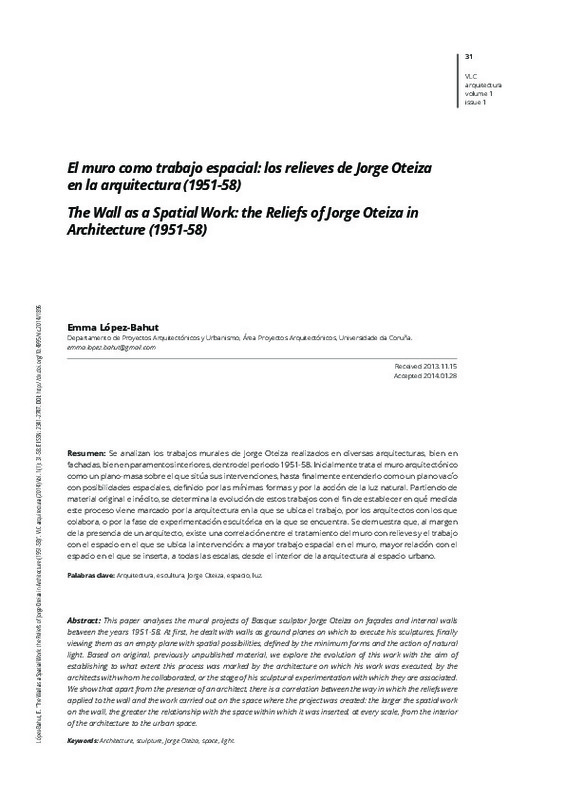JavaScript is disabled for your browser. Some features of this site may not work without it.
Buscar en RiuNet
Listar
Mi cuenta
Estadísticas
Ayuda RiuNet
Admin. UPV
El muro como trabajo espacial: los relieves de Jorge Oteiza en la arquitectura (1951-58)
Mostrar el registro completo del ítem
López Bahut, E. (2014). El muro como trabajo espacial: los relieves de Jorge Oteiza en la arquitectura (1951-58). VLC arquitectura. Research Journal. 1(1):31-58. https://doi.org/10.4995/vlc.2014.1896
Por favor, use este identificador para citar o enlazar este ítem: http://hdl.handle.net/10251/39229
Ficheros en el ítem
Metadatos del ítem
| Título: | El muro como trabajo espacial: los relieves de Jorge Oteiza en la arquitectura (1951-58) | |
| Otro titulo: |
|
|
| Autor: | López Bahut, Emma | |
| Fecha difusión: |
|
|
| Resumen: |
[EN] This paper analyses the mural projects of Basque sculptor Jorge Oteiza on façades and internal walls between the years 1951-58. At first, he dealt with walls as ground planes on which to execute his sculptures, finally ...[+]
[ES] Se analizan los trabajos murales de Jorge Oteiza realizados en diversas arquitecturas, bien en fachadas, bien en paramentos interiores, dentro del periodo 1951-58. Inicialmente trata el muro arquitectónico como un ...[+]
|
|
| Palabras clave: |
|
|
| Derechos de uso: | Reconocimiento - No comercial (by-nc) | |
| Fuente: |
|
|
| DOI: |
|
|
| Editorial: |
|
|
| Versión del editor: | https://doi.org/10.4995/vlc.2014.1896 | |
| Tipo: |
|








